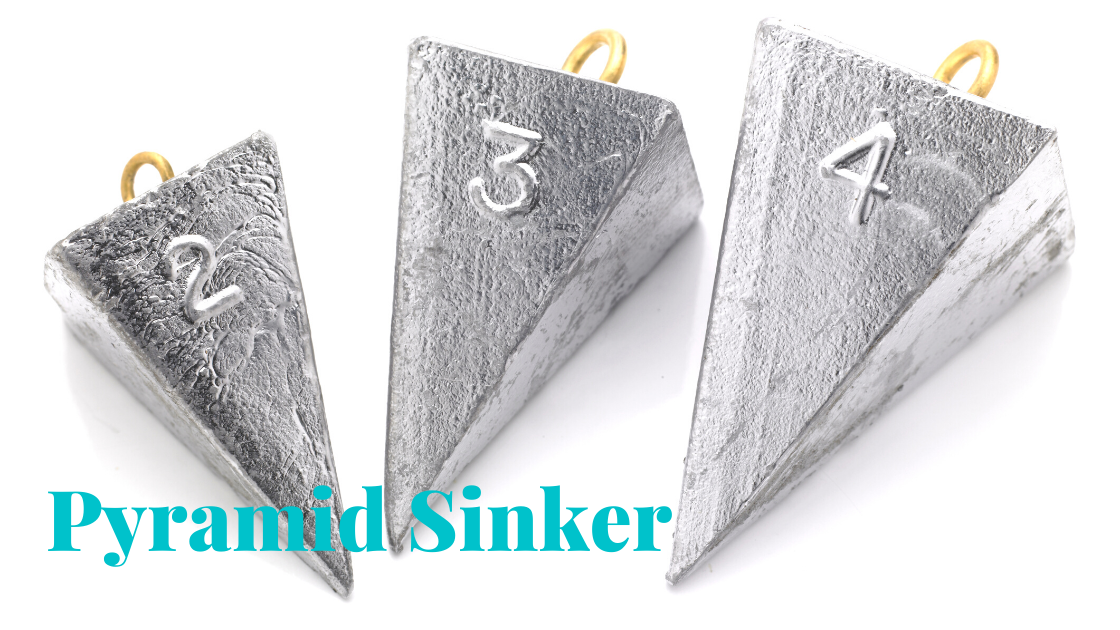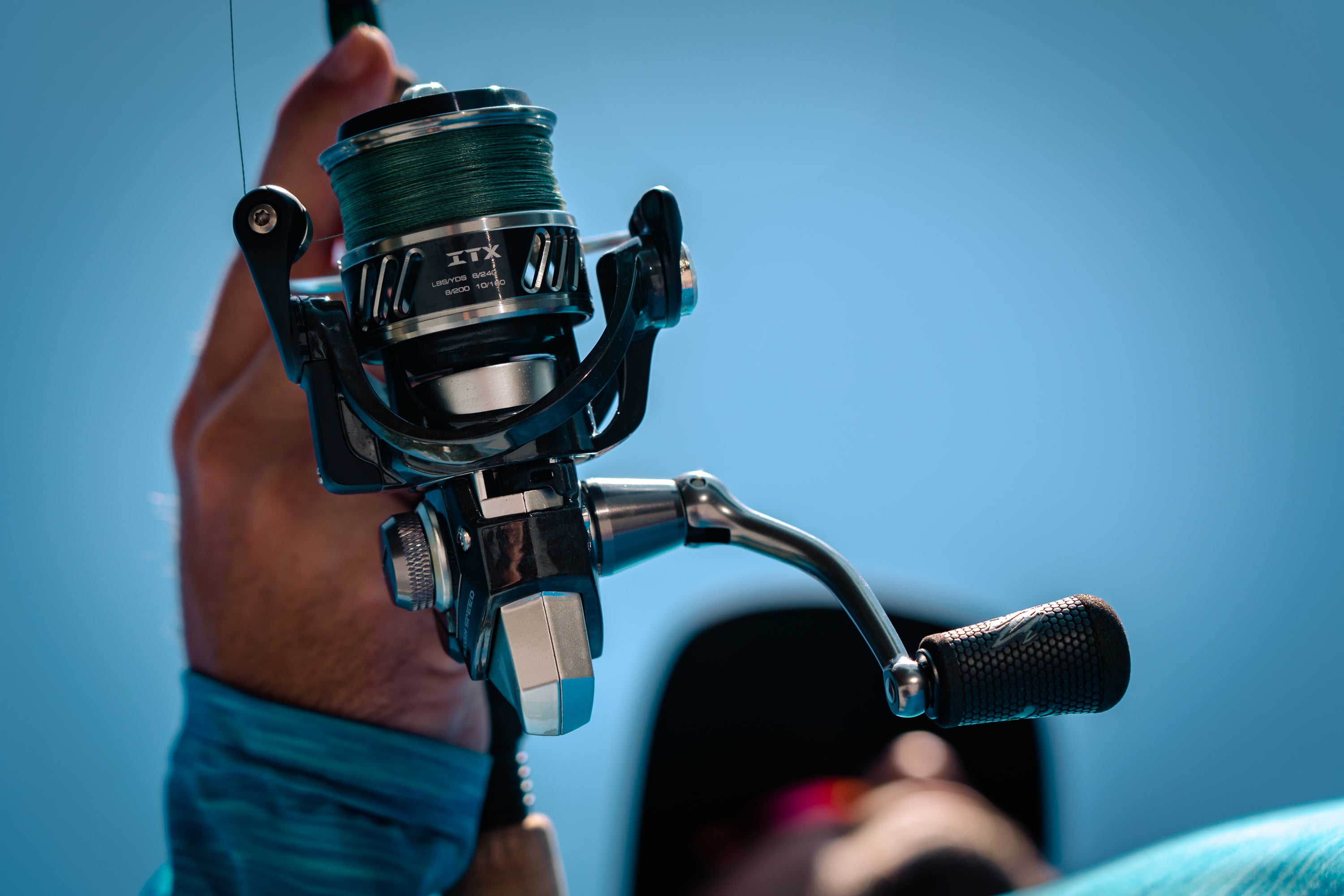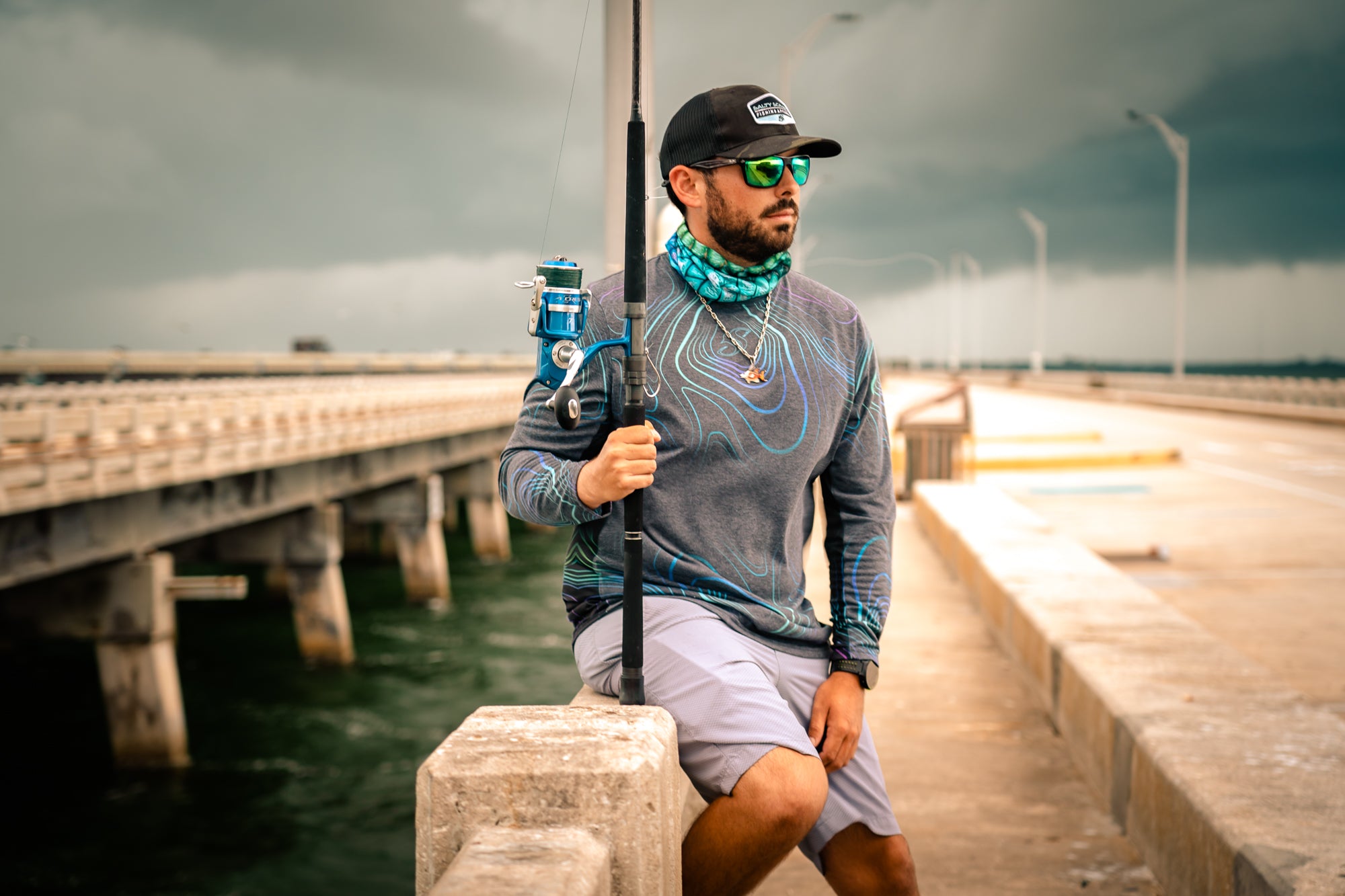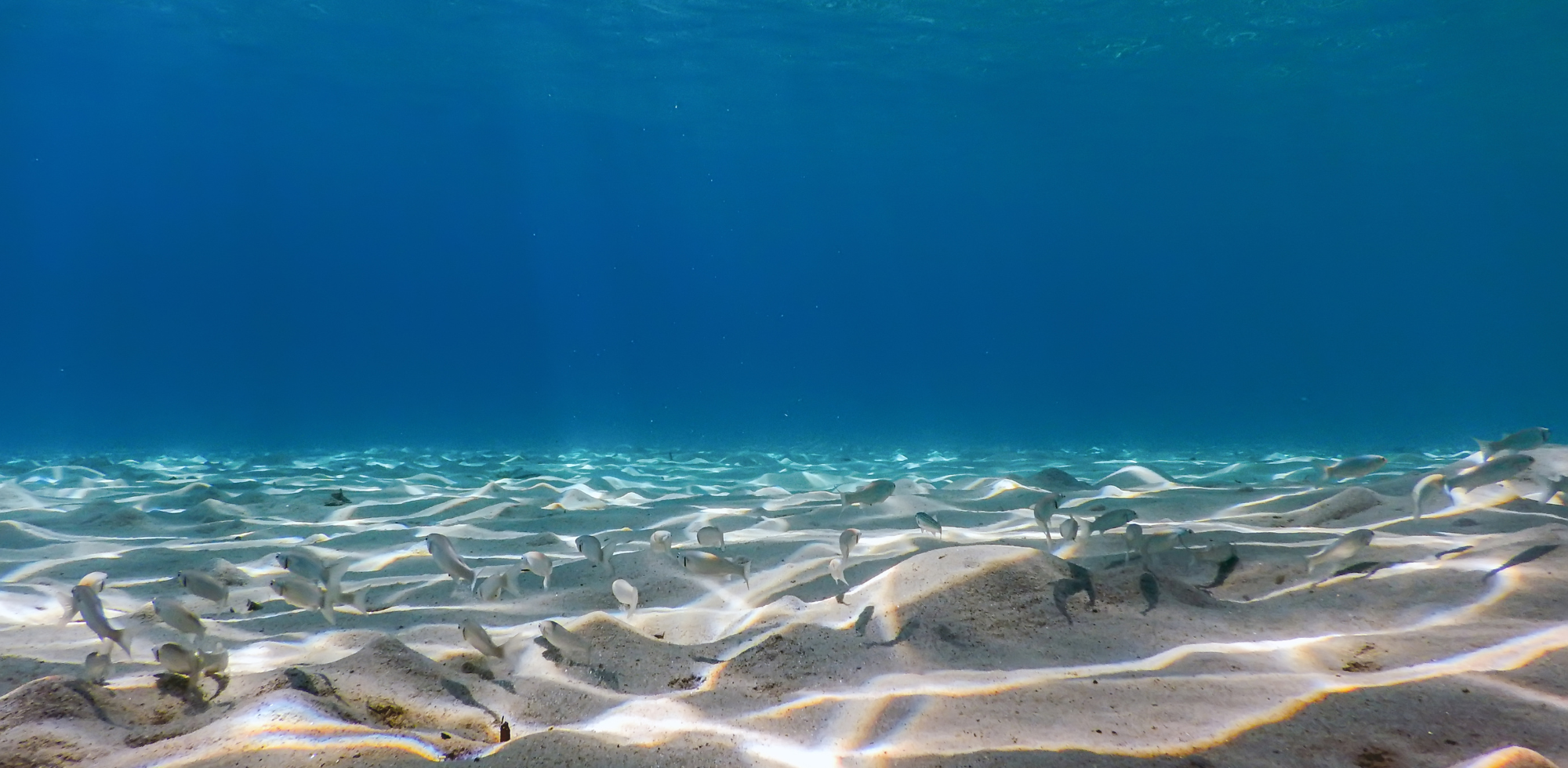A great fishing rod, leader, hook, and optimal bait is excellent, but if you can't get your fishing bait down into the strike zone, none of it matters. So without wasting much time, let us quickly start exploring fishing weights in full detail to make your weekends and holidays as excellent as they should be!

What Are Fishing Weights?
In fishing, the terms "weight" essentially mean the same thing and allude to a piece of metal/lead used to sink a lure or bait to some level in the water. They are connected to the fishing line and made in many shapes and sizes. Also, they have diverse applications. Generally, fishing weights are light in weight and small. As a rule, it is best to use the lightest weight that will efficiently suit the depth you are fishing and the presentation you are using.Why Use Fishing Weights?
The primary use of fishing weights is simple, as everyone uses them to weigh the bait or lure down far enough into the water to reach the fish you crave. In deep water, fish may be hiding significantly deeper than your light lure can sink. Adding a fishing weight can help you to control exactly how deep your bait will fall.Some people may be unaware of the different ways in which these little chunks of lead or metal can be helpful. Fishing weights can help anchor bait in one place, move bait along currents, and navigate rough obstacles at the bottom of the ocean or lake bed.
In our opinion, fishing weights provide you with a great deal of stability when the water currents underneath flow with high velocity or going through different water currents. It also helps keep your bait stationary in case there's too much variation of speed between different layers of water. Most importantly, it helps the fishing hook hold on to its position in the initial moments when the fish grabs the bait and starts moving. Thus, we can agree that having weights is helpful on many levels.
How To Choose The Right Fishing Weights?
Choosing the correct fishing weights is primarily based on some specific factors. For instance, what environment are you fishing in - Are you fishing while on land or a boat? How deep is it? What structure surrounds the place where you are fishing? Tides play an essential variable in the ocean or rivers? Then, what presentation are you trying to show the target fish typically found in the water column? By answering these questions, you will give yourself some significant clues when it comes to selecting the best fishing weight for the kind of fishing you're doing.Different Types Of Fishing Weights And Their Applications
Now, we will run through the different types of fishing weights available to buy, what rigs to use, and when to use them. There are hundreds of different types of fishing weights on the market; there are a handful of main ones to know about that you will probably use more frequently. By the end, you will be able to tackle almost any fishing scenario you could face during your outdoor adventures.
Bullet Fishing Weights

Also known as Barrel fishing weights, bullet fishing weights are egg-shaped weights that seem almost like a bead. These weights are a favorite amongst deep water or freshwater anglers. The bullet-shaped exterior helps the sinker to glide over obstacles without getting caught in mud and rubble. These fishing weights are popular with many anglers but are most common amongst anyone fishing for bass and catfish.
The application of bullet fishing weights is for light-line surf fishing. Also, it is popularly used in conjunction with a Carolina Rig in Southern California and Baja Mexico to catch a variety of species from the shore with California halibut, corbina, yellowfin croaker, surfperch, spotfin croaker, and other near-shore species. The "C-rig" is a standard rig though infrequent other applications like trout fishing, largemouth bass, and catfish fishing.
It is effortless to set up and very efficient, consisting of the sinker threaded onto the mainline, a swivel, and a leader line with a hook attached. A bead is threaded between the swivel and the weight to protect the knot. We start with 14gr size for light line fishing to adjust and start from there depending on the depth of water, tidal movement, and current.
The exact starting point weight-wise we recommend for most light-action combos, salt or freshwater. Bullet fishing weights can also come in much larger sizes, and these are useful if you want a heavily weighted rig that needs to reach deep in the water column. For instance, if you are out fishing in a deep lake, dropping big baits for grouper in the ocean - bullet fishing weights are helpful in all these scenarios.
Pyramid Fishing Weights 
Pyramid fishing weights are triangular weights that attach to your line through a loop, the same as the bell sinker. The unique pyramid shape allows these weights to sink into hard, soft surfaces, including mud or sand, which is perfect for bottom fishing. It makes pyramid fishing weights ideal for waters with fast currents to keep the bait stabilized in one spot. Surf fishers love pyramid fishing weights for these reasons.
Pyramid fishing weights can sink to the bottom easily and quickly, which causes some anglers to choose them over bullet fishing weight. In this case, the weight serves to both pull the bait deeper and anchor it.
A typical application for pyramid fishing weights is when targeting larger species from the beach. Usually, the bait involved will be a chunked baitfish like herring, mackerel, sardine, or a squid to attract a large predator. There are numerous ways to set up this kind of rig (Carolina rig is most common), but the pyramid shape helps to hold that bait to a spot so the predators can easily find it. Over on the West coast of Florida, I frequently use the pyramid sinker, especially when fishing the Skyway Fishing pier. They make for an excellent bait sinker in the fast-moving current.
Split Shot Fishing Weights 
Split Shot fishing weights are arguably the most versatile and widely used fishing weights out there. Their rounded shape with a groove running through the middle allows anglers to pinch the weight into place on their line. It makes them ideal for situations when you only need to add a bit more weight to your lure or live bait, and you can easily remove them if they are not working out. Split Shot fishing weights come in various sizes, and you can use them at almost any depth of water, but anglers tend to prefer these shallow endeavors, as they are so light and straightforward to use.
Split shot fishing weights are flawless for young or beginner anglers, but you can also use them for techniques like weighing bait to control its movement down a current or stream. I like to keep the rig a clean and straightforward as possible. Adding just a touch of lead can help entice that strike. Therefore I find that I use split shots frequently in both freshwater and saltwater applications.
Torpedo-Style Fishing Weights

Torpedo-Style fishing weights have a small wire loop at either end and a slimmer, longer shape. You can use it for dropping baits in deep water in the ocean, for instance, when you want a hydrodynamic fishing weight that sinks quickly and offers little resistance when retrieving up through the water.
Applications of Torpedo-Style fishing weights include fishing live and cut baits for rockfish, tuna, grouper, and yellowtail at a certain depth. You can also use the torpedo-style fishing weight when trolling. It includes towing a lure or baits behind a moving boat to attract predators such as salmon, large trout, muskie, tuna, sailfish, and marlin. You can fix the mainline to one loop, the leader to another loop, and it helps the lure run more profound in the water column and away from the surface.
Bomb-Style Fishing Weights
Bomb-Style fishing weights are also known as Casting fishing weights. A bomb or casting fishing weight has a pear-shaped body with a wire loop from the top to thread your line through. The shape makes them perfect for casting a reasonable distance, but they are not great at holding bait in place with a stronger current.
This Bomb-Style fishing weight is prevalent for much freshwater fishing and is commonly used when focusing on catfish, carp, trout, and bass, often with a more static bait-based approach. The bomb-style fishing weight is also valuable when bouncing baits down the stream when you need a certain amount of weight to cast and hold the bait down, but you want it to be naturally moving down with the stream.
The ball shape does not dig into the bottom as a pyramid fishing weight would. For instance, it is perfect for some trout and salmon fishing techniques, for example, "flossing" for steelhead in the northwest. The style of this fishing weight is also known as bank fishing weight, but it's best to buy the type with a metal loop on the top. Numerous retailers sell various packs of casting fishing weights, and a small range covering 14-57g will serve any angler well for most of their fishing.
Some Additional Fishing Weights That You Might Use
With fishing-related things, each sub-category of the sport has its own favored weights designs. Also, there are numerous variations, often designed for specific local applications. They can also prove helpful. Keep it in mind. For instance, a sizeable cannonball-shaped weight is used for trolling on a set-up known as a downrigger. It enables you to fish a light combo at an excellent depth as a downrigger - which consists of a winch, heavy line, and ball weighing several hundred removes the need for a considerable weight. A clip secures the mainline near the cannonball weight that attaches until you hook a fish. Then, it releases from the downrigger, and the battle is on. The rig seems complex but isn't; however, it is very effective for getting your lure in the strike zone.
There is another type of fishing known as deep drop fishing. In this type of fishing, you target deep-water species: Snowy grouper, golden tilefish, and queen snapper in hundreds of feet of water. As fishing equipment and technology advance, deep dropping is becoming more common among recreational fishermen. A significant cylindrical fishing weight weighing several pounds is used for this, with a high electrically powered reel to retrieve the hefty set-up less cumbersome. Often, anglers targeting catfish and carp use a fishing weight with a wire cage built around it. It is so that a glutenous mix of various powdered enticements and cereals keep their sticky dough consistency. Packbait can be easily molded securely around the wire cage for casting. This wire helps the pack bait grip the fishing weight but still disperse when exposed to water.
How To Choose The Best Fishing Weights For Fishing?
By the end, we've run through all the different kinds of fishing weights and their applications for each. Hence, you should now match your fishing weights selection to the conditions wherever you will do the fishing. Each fishing weight has its advantages and disadvantages; now, it's totally up to you to consider which one and make your choice to maximize your chances of success. Experience is a big help in this respect, but trial and error is a fantastic way of gaining the experience necessary to choose the best fishing weights. You can find out your ideal fishing weight by experimenting in different conditions, and you may also come up with specific weight types according to the waters you are planning to fish in. We highly recommend hiring a polished fishing captain in the area you want to learn to get an edge, and a significant head start. These captains have been successfully fishing their waters for decades and can offer valuable information to shorten the learning curve.
Wrap Up
We have gone through most aspects of using fishing weights, but we would like to add one more thing. Using fishing weights relies on multiple factors: the speed of the underwater currents, how great the fish is, and your grip on fishing. Therefore, choosing the right one indeed helps you, and it is preferable to select non-toxic weights. We hope this mini-guide helps you understand the basics of fishing weights and adds to your knowledge on the topic.
Like this content and what to show your support? Purchase a shirt or two so we can continue serving your fishing needs:




